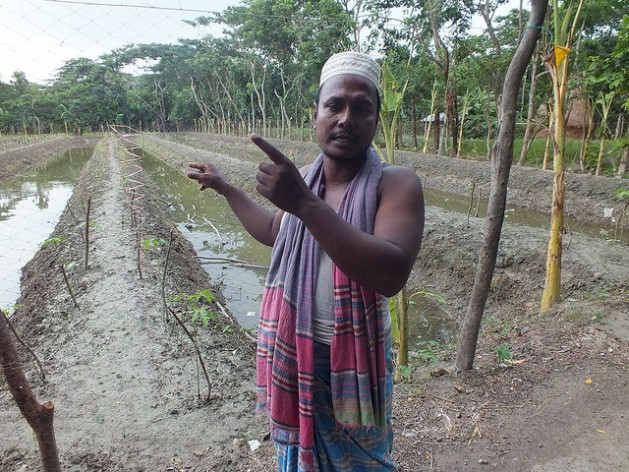Bangladesh agriculture adapts to sea-level rise
A continuous influx of sea water is threatening agriculture and food security in vast coastal areas of Bangladesh, but farmers are finding ways to adapt, like cultivating fish and crops at the same time.
The coastal and offshore areas of this low-lying, densely populated country include tidal estuaries and river floodplains in the south along the Bay of Bengal. Here the arable land is about 30 percent of the total available in the country.
According to salinity survey findings, about one million hectares, or about 70 percent of cultivated lands of the southern coastal areas of Bangladesh, are affected by various degrees of soil salinity.
It is already predicted that if the current trend of climate change continues, rice production could fall by 10 percent and wheat by 30 percent.
Coastal Integrated Technology Extension Programme (CITEP) encourages farmers to use the Sarjan model of long raised rows of soil about one metre wide and 90 cm high for cultivating varieties of vegetables. The trenches between the rows are filled with water into which various types of fish are released for maturing. The water for irrigating the plants comes from nearby lakes filled with freshwater drawn from the Meghna River.
The advantage of using Sarjan model is that it protects cropland from inundation during storm surges, tidal waves and flash flooding and avoids high salinity.
The new farming practice has turned out to be very popular in Char Fasson, where over 9,000 farmers are now using the model. Many farmers have also formed self-help groups where members benefit from sharing each others’ experiences.
Reflections
Is this a permaculture-allied solution? Could it be used elsewhere?
Are you doing permaculture in this region? If so, we'd love to hear more about it. Please get in touch with Naomi on international@permaculture.org.uk

No comments:
Post a Comment